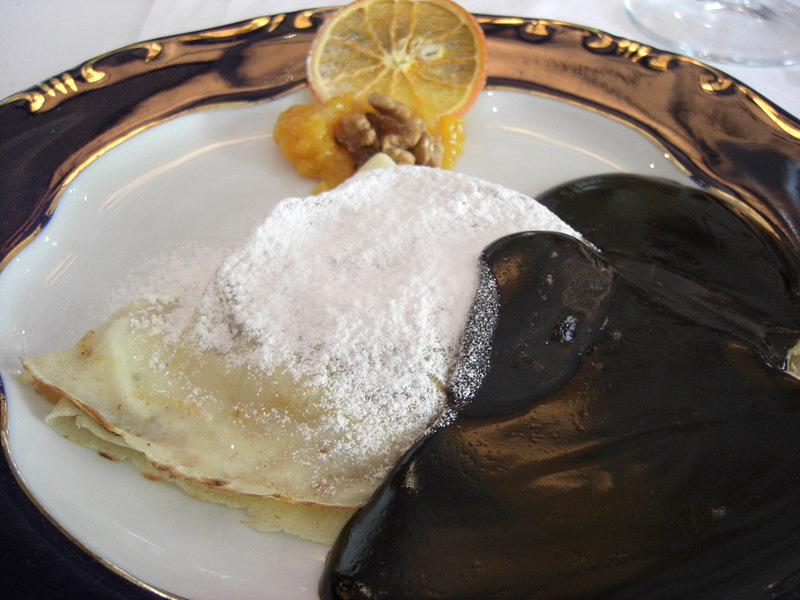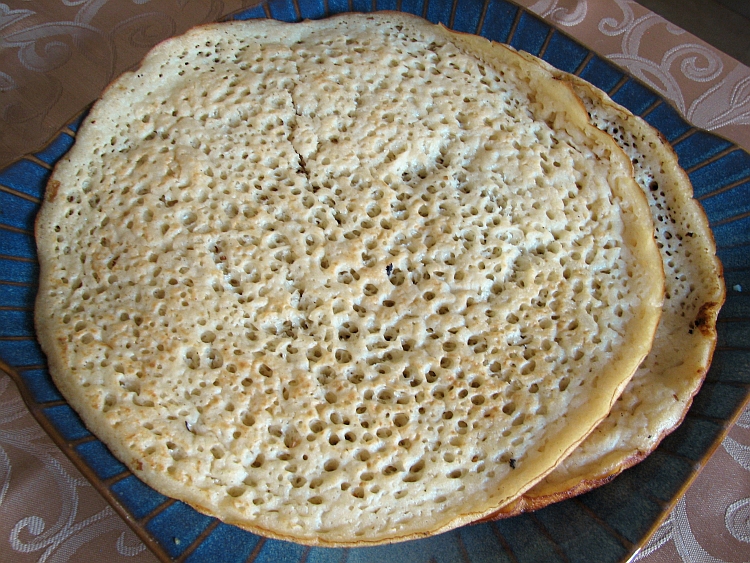|
Flädle
Flädle is a southern Germany, German garnish and soup ingredient from the region of Swabia consisting of savory pancakes, cut into ribbons.Flädle , Suppen und Eintöpfe ''schmeck-den-sueden.de'', Retrieved March 23, 2017 ''Flädle'' are made by first making plain crepe-style pancakes (''Palatschinken''), then tightly rolling them up and slicing them into ribbons. They are then usually served in a clear soup or beef broth in a dish of ''Flädlessuppe''. In other parts of Germany, the dish is known as ''Eierkuchensuppe'', derived from the regional name ''Eierkuchen'' (lit. "egg cakes") for pancakes. In Austria a similar dish to Flädle is called ''Frittaten'' (from the Italian frittata, "frying"). Frittaten are thicker than Flädle. See also * List of pancakes * References ...
|
Swabian Cuisine
Swabian cuisine is native to Swabia, a region in southwestern Germany comprising great parts of Württemberg and the Bavarian part of Swabia, as well as the Allgäu which has parts lying in Austria. Swabian cuisine has a reputation for being rustic, but rich and hearty. Fresh egg pastas (e.g., Spätzle noodles or Maultaschen dumpling wrappers), soups, and sausages are among Swabia's best-known types of dishes, and Swabian cuisine tends to require broths or sauces; dishes are rarely "dry". History As soils were meagre and stony, conditions for raising cattle were poor. Meat, therefore, was something of a luxury for most, and was mainly consumed by the aristocracy and landowners, while the common people often had to be content with tripe where meat was concerned. Regional influences on Swabian cookery abound. Old-Wurttemberg was pietistic, and the cuisine is therefore rather simple, as nutrition was prized above flavour, in keeping with Christian asceticism. In the Catholic pa ... [...More Info...] [...Related Items...] OR: [Wikipedia] [Google] [Baidu] |
Palatschinken
Palatschinke (or palaccinka, plural palatschinken) is a thin crêpe-like variety of pancake of Greco-Roman origin. While the dessert is most common in South and West Slavic countries, it is also generally known in other parts of Central and Eastern Europe. Names of the dish include ''palaçinka'' (Albanian), ''Palatschinke'' (pl. ''Palatschinken'') (Austrian German), ''palačinka'' (pl. ''palačinke'') ( Bosnian, Croatian, Montenegrin, Slovene), ''palacinka'' ( Slovak), ''palačinka'' (Czech), ''палачинка'' (Bulgarian, Macedonian, Serbian), ''налисник'' (Ukrainian), '' naleśnik'' (Polish), ''clătite'' (Romanian), ''palacinta'' or ''palacinca'' (Italian) and ''palacsinta'' ( Hungarian). History and etymology The dish is of Greco-Roman origin.. In 350 BCE, the ancient Greek poets Archestratos and Antiphanes first mentioned ''plakous''. Cato the Elder's short work '' De agri cultura'' ("On Farming") from about 160 BC includes an elaborate recipe for ''placen ... [...More Info...] [...Related Items...] OR: [Wikipedia] [Google] [Baidu] |
List Of Pancakes
This is a list of notable pancakes. A pancake is a flat cake, often thin and round, prepared from a starch-based batter and cooked on a hot surface such as a griddle or frying pan. In Britain, pancakes are often unleavened, and resemble a crêpe. In North America, a raising agent is used (typically baking powder). The North American pancake is similar to a Scotch pancake or drop scone. Pancakes * * * * * * * * * * * * * * * * * * * * ** ** * * * * * * * * * * * * * * * * * * * * * * * * * ** ** ** ** ** ** ** * * * * * * * * * * * * * * * * * * * * * * * * * * * * * * * * * * * * * * * – also referred to as spring onion pancake * * * * * * * * * * * * * See also * Pearl Milling Company – is a brand of pancake mix, syrup, and other breakfast foods * Crepe maker * List of bread dishes * List of quick breads * Lists of prepared foods * List of toast dishes * P ... [...More Info...] [...Related Items...] OR: [Wikipedia] [Google] [Baidu] |
Germany
Germany,, officially the Federal Republic of Germany, is a country in Central Europe. It is the second most populous country in Europe after Russia, and the most populous member state of the European Union. Germany is situated between the Baltic and North seas to the north, and the Alps to the south; it covers an area of , with a population of almost 84 million within its 16 constituent states. Germany borders Denmark to the north, Poland and the Czech Republic to the east, Austria and Switzerland to the south, and France, Luxembourg, Belgium, and the Netherlands to the west. The nation's capital and most populous city is Berlin and its financial centre is Frankfurt; the largest urban area is the Ruhr. Various Germanic tribes have inhabited the northern parts of modern Germany since classical antiquity. A region named Germania was documented before AD 100. In 962, the Kingdom of Germany formed the bulk of the Holy Roman Empire. During the 16th ce ... [...More Info...] [...Related Items...] OR: [Wikipedia] [Google] [Baidu] |
Swabia
Swabia ; german: Schwaben , colloquially ''Schwabenland'' or ''Ländle''; archaic English also Suabia or Svebia is a cultural, historic and linguistic region in southwestern Germany. The name is ultimately derived from the medieval Duchy of Swabia, one of the German stem duchies, representing the territory of Alemannia, whose inhabitants interchangeably were called '' Alemanni'' or '' Suebi''. This territory would include all of the Alemannic German area, but the modern concept of Swabia is more restricted, due to the collapse of the duchy of Swabia in the thirteenth century. Swabia as understood in modern ethnography roughly coincides with the Swabian Circle of the Holy Roman Empire as it stood during the Early Modern period, now divided between the states of Bavaria and Baden-Württemberg. Swabians (''Schwaben'', singular ''Schwabe'') are the natives of Swabia and speakers of Swabian German. Their number was estimated at close to 0.8 million by SIL Ethnologue as of 2 ... [...More Info...] [...Related Items...] OR: [Wikipedia] [Google] [Baidu] |
Pancake
A pancake (or hotcake, griddlecake, or flapjack) is a flat cake, often thin and round, prepared from a Starch, starch-based batter (cooking), batter that may contain eggs, milk and butter and cooked on a hot surface such as a griddle or frying pan, often frying with oil or butter. It is a type of batter bread. Archaeological evidence suggests that pancakes were probably eaten in prehistoric societies. The pancake's shape and structure varies worldwide. In the United Kingdom, pancakes are often leavening agent, unleavened and resemble a crêpe. In North America, a leavening agent is used (typically baking powder) creating a thick fluffy pancake. A ''crêpe'' is a thin Brittany, Breton pancake of French origin cooked on one or both sides in a special pan or crepe maker to achieve a lacelike network of fine bubbles. A well-known variation originating from southeast Europe is a ''palačinke'', a thin moist pancake fried on both sides and filled with jam, cream cheese, chocolate, ... [...More Info...] [...Related Items...] OR: [Wikipedia] [Google] [Baidu] |
Pancake
A pancake (or hotcake, griddlecake, or flapjack) is a flat cake, often thin and round, prepared from a Starch, starch-based batter (cooking), batter that may contain eggs, milk and butter and cooked on a hot surface such as a griddle or frying pan, often frying with oil or butter. It is a type of batter bread. Archaeological evidence suggests that pancakes were probably eaten in prehistoric societies. The pancake's shape and structure varies worldwide. In the United Kingdom, pancakes are often leavening agent, unleavened and resemble a crêpe. In North America, a leavening agent is used (typically baking powder) creating a thick fluffy pancake. A ''crêpe'' is a thin Brittany, Breton pancake of French origin cooked on one or both sides in a special pan or crepe maker to achieve a lacelike network of fine bubbles. A well-known variation originating from southeast Europe is a ''palačinke'', a thin moist pancake fried on both sides and filled with jam, cream cheese, chocolate, ... [...More Info...] [...Related Items...] OR: [Wikipedia] [Google] [Baidu] |
Soup
Soup is a primarily liquid food, generally served warm or hot (but may be cool or cold), that is made by combining ingredients of meat or vegetables with stock, milk, or water. Hot soups are additionally characterized by boiling solid ingredients in liquids in a pot until the flavors are extracted, forming a broth. Soups are similar to stews, and in some cases there may not be a clear distinction between the two; however, soups generally have more liquid (broth) than stews. In traditional French cuisine, soups are classified into two main groups: ''clear soups'' and ''thick soups''. The established French classifications of clear soups are ''bouillon'' and ''consommé''. Thick soups are classified depending upon the type of thickening agent used: ''purées'' are vegetable soups thickened with starch; '' bisques'' are made from puréed shellfish or vegetables thickened with cream; cream soups may be thickened with béchamel sauce; and '' veloutés'' are thickened with egg ... [...More Info...] [...Related Items...] OR: [Wikipedia] [Google] [Baidu] |
Beef Broth
Broth, also known as bouillon (), is a savory liquid made of water in which meat, fish or vegetables have been simmered for a short period of time. It can be eaten alone, but it is most commonly used to prepare other dishes, such as soups, gravies, and sauces. Commercially prepared liquid broths are available, typically chicken, beef, fish, and vegetable varieties. Dehydrated broth in the form of bouillon cubes were commercialized beginning in the early 20th century. Broths have been used as a nutrition source for the sick in Great Britain since at least the early 1700s, such as for dysentery patients. Stock versus broth Many cooks and food writers use the terms ''broth'' and ''stock'' interchangeably. In 1974, James Beard wrote that stock, broth, and bouillon "are all the same thing". While many draw a distinction between stock and broth, the details of the distinction often differ. One possibility is that stocks are made primarily from animal bones, as opposed to mea ... [...More Info...] [...Related Items...] OR: [Wikipedia] [Google] [Baidu] |
German Soups
German(s) may refer to: * Germany (of or related to) **Germania (historical use) * Germans, citizens of Germany, people of German ancestry, or native speakers of the German language ** For citizens of Germany, see also German nationality law **Germanic peoples (Roman times) * German language **any of the Germanic languages * German cuisine, traditional foods of Germany People * German (given name) * German (surname) * Germán, a Spanish name Places * German (parish), Isle of Man * German, Albania, or Gërmej * German, Bulgaria * German, Iran * German, North Macedonia * German, New York, U.S. * Agios Germanos, Greece Other uses * German (mythology), a South Slavic mythological being * Germans (band), a Canadian rock band * German (song), "German" (song), a 2019 song by No Money Enterprise * ''The German'', a 2008 short film * "The Germans", an episode of ''Fawlty Towers'' * ''The German'', a nickname for Congolese rebel André Kisase Ngandu See also * Germanic (disambi ... [...More Info...] [...Related Items...] OR: [Wikipedia] [Google] [Baidu] |




_-_Soup_(1865).jpg)
